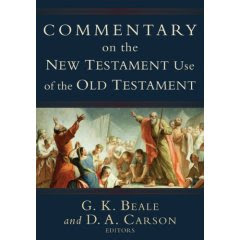Don Johnson asks how a fundamentalist would answer the questions asked to evangelical leaders in a recent
Touchstone article. Here are my answers:
1.How do you define “Fundamentalist” in a way that distinguishes Fundamentalists from other believing Christians? And has this definition changed over the last several years? I would say that both Fundamentalists and Evangelicals agree on the core doctrines of Christianity. However, Fundamentalists distinguish themselves by their consistent, Biblical response to (1) liberalism and other expressions of false gospels and unbelief; (2) persistently disobedient brethren; and (3) worldliness, defined briefly as the influence of Satan, our flesh, and world’s apart-from-God wisdom upon our lives. Ultimately, that Biblical response often involves separation, always following the right steps, implementing it at the right time, and to the proper degree.
2.Has Fundamentalism matured since the 1950s, and if so in what ways? Primarily, I think we have understood that militancy means that we must engage the battle when necessary, much like when Nehemiah would blow the trumpet to gather the workers to the particular point of attack, but that it is the Lord’s battle and so we must use spiritual means to fight it, not fleshly ones. I think we have out-grown the carnal mind set that said pugnaciousness is a virtue.
Secondly, I think we have also grown in our handling of the Word, emphasizing expository preaching through of the whole counsel of God, rather than riding limited hobby horses.
Thirdly, I think we have shed some of the Finnyism that has plagued much of our movement’s history.
Of course, not every wing of fundamentalism has matured in these areas, unfortunately.
3.Has Fundamentalism lost anything in the process of maturing (if it did)? I think Fundamentalism has become more worldly. Because of past abuses, overemphasis on externals, and the lack of true Biblical training in this area, churches today are very hesitant to deal with personal holiness issues. Legalism is the major taboo today.
4.Are there any fundamental differences within the Fundamentalist movement today, and do you think they will deepen into permanent divisions, or even have already? How might they be healed? One major divide exists over KJVonlyism. I see this issue going away as more and more churches deal decisively with the issue, leaving only the fringe-wing of Fundamentalism (if we can still call it that) embracing that position.
I think another area in which we may see a divide within traditional Fundamental circles is in the area of music. From my standpoint, I see a distressing amount of accommodation to and acceptance of groups like Casting Crowns and MercyMe and the whole CCM genre. It may be that those of us who cannot abide this development will find it harder and harder to find a local church they can fully embrace.
5.What does your movement, speaking generally, fail to see that it ought to see? I think we fail to see the compromises to the gospel that occur within our own movement. Easy-believism, no-repentance gospels, shoddy expositional preaching, KJVonlyism, and increasing worldliness all compromise the gospel to some degree or another.
6.What would you say to a Fundamentalist tempted to become Catholic or Orthodox? I would say read the book of Hebrews. “Take care, brothers, lest there be in any of you an evil, unbelieving heart, leading you to fall way from the living God.” (Heb. 3:12)
7
.What has Fundamentalist to offer the wider world that it will find nowhere else? Fundamentalism is simply obedient Christianity. It is following a Biblical philosophy of Christian living, guarding the gospel in faith and practice. That is why I am a Fundamentalist – because I believe that it is a life that most glorifies God. We should be offering the world what the church displays to the heavenly angels – the manifold wisdom of God.
8.What else would you like to say? I’ve probably said too much already. :)
Labels: fundamentalism
 Isaiah begins in chapters 1-12 detailing the sin-sick condition of God’s people and ends up with several chapters regarding the promised Messiah. Chapters 13-39 present God conquering all the surrounding nations, showing God’s trustworthiness to His people. Chapters 40-66 show Israel’s ultimate salvation through the work of God’s servant. That is just a very rough 3-part outline but it matches up surprisingly well with Mary’s Magnificat:
Isaiah begins in chapters 1-12 detailing the sin-sick condition of God’s people and ends up with several chapters regarding the promised Messiah. Chapters 13-39 present God conquering all the surrounding nations, showing God’s trustworthiness to His people. Chapters 40-66 show Israel’s ultimate salvation through the work of God’s servant. That is just a very rough 3-part outline but it matches up surprisingly well with Mary’s Magnificat:

